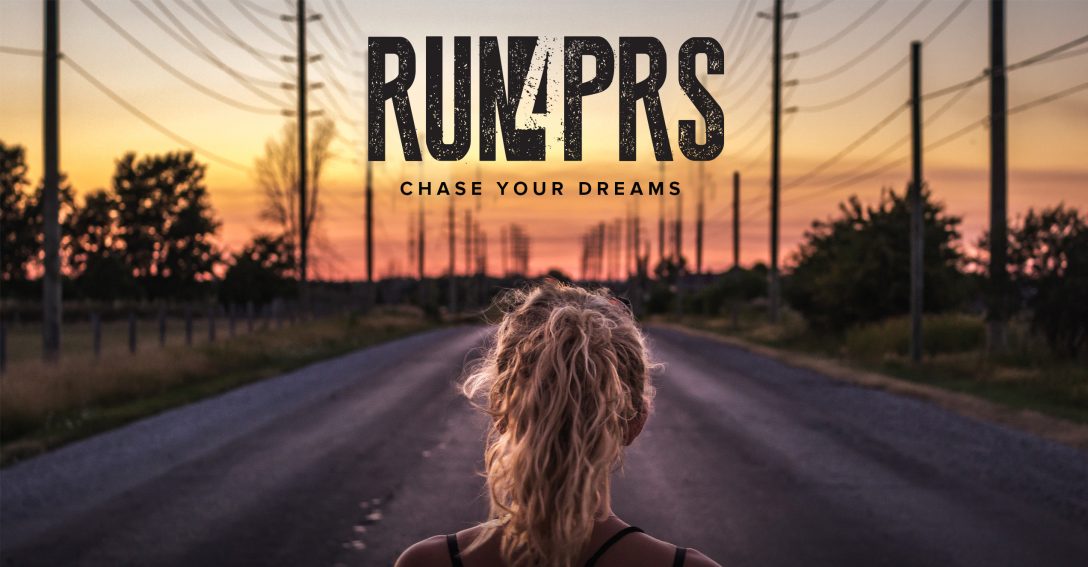We are located in Minneapolis, Minnesota. From November-February negative temperatures are very normal. Ice, snow, sub-zero temps don’t stop us from getting out there and running. Month after month, we just don’t want to spend another day on the dreaded treadmill. Many of us opt to get outside even in the single digits!

If you are looking for brave the cold weather, here are the tips you need to know.
1- Get used to checking the weather & windchill
Know what you are dealing with! Winds over 10 mph will feel terrible in the cold. On those days it will be important to brace yourself for the wind.
Did it snow the day before? We need to know these facts before we get started!
2- Dress in layers
It is always better to have extra layers to take off than not having enough on. Everyone has their own tolerance for weather.
You want to have your inner most layer be the tightest and lightest. A tighter fitted long sleeve as your first layer will keep you warmer than a loose fitting one. Tucking in your short will also help preserving your core temp.
- First Layer is tight, light, and tucked in!
The next layer we will want to be thicker. Bonus points if it covers your neck! Zip ups made for winter running work great for this second layer.
- Second Layer: thicker & neck coverage!
Depending on the temperature and wind, you might add on a wind breaker jacket as your outter shell. Typically above 20 degrees f, this is not needed.
- Third Layer: Under 20f grab a wind breaker jacket!
Winter running tights are a great option from 40-25 degrees. When the wind is bad or the temps are below 20, most athletes complain about legs going numb. In this case doubling up with tights OR purchasing WIND RESISTANT TIGHTS will be a game changer (be prepared to fork over the cash for these).
3- Hats and Gloves
A lot of this is trial and error. Headbands and hats are a must under 35 degrees. Gloves are the hardest to find. Over 35 degrees most gloves will be okay, but once the temps get lower, many athletes complain about their hands going numb! In this case, be prepared to pull out your pocket book and fork over more money for something like this.
If your hands get numb regularly and it bothers you, I would make the investment in mittens like those 🙂
Neck warmers and face masks are also something that come in handy on the sub 0 days.

4- Finding a place with optimal footing
Did it snow more than 1-2 inches yesterday? Chances are your lovely neighborhood and city did NOT shovel all the sidewalks you are used to running on. Your first winter running will be a learning curve. There are certain areas of Minneapolis that NEVER get the sidewalks plowed, but there are certain trails that ALWAYS get plowed. Know your area!
Are their any major parks that are used during the winter months? Scope those out after a snowfall to see the footing.
Chain of Lakes in Minneapolis is always plowed. However, after an ice storm, you will have to be careful with ice.
5- Ice is the biggest problem
It’s all fun and games until someone slips on ice. This is where you need to be the most careful.
Days when Ice will be the worst:
- Cold day AFTER a sunny 30+ degree day where snow melted then froze overnight
- Day AFTER freezing rain
- Day after a ‘snow’ when the temperature was in the 30s.
- The week following an of these events
WATCH OUT FOR BLACK ICE OR COVERED ICE. Often, you will not see the ice because it is black or covered by snow. You need to be extremely careful and always watch your footing when there is ice around.
You will want to avoid the days when ice is bad. If you have a workout: do it inside, move it, or cancel it. You are not going anywhere fast when there is ice on the ground.
6- Winter Running Shoes
If you live in an area that snows/has ice take yourself to the local running store to find a pair of winter running shoes. Theres shoes are made like trail shoes with gortex material to keep them dry AND have a supportive bottom to help you not slip on ice.
Yak Tracks are also very popular you can attach to the bottom of your shoe!
You will need to look into these options if you want to run in the snow or ice.
7- Be prepared to slow down and modify
Sub 20 degrees is not the day to try to go after a PR. Your muscles do not work as well when they are cold. Many athletes find doing easy runs outside during the winter is the best option. Running under marathon pace can be a struggle with the ice and the legs being cold. Treadmill is always a great option on workout days to keep fit and be safe.
8- But isn’t it cold?
Yes! It is cold! If you continue running and keep your core temp up with the exercise, you will stay relatively warm and be okay!
It is normal to still feel uncomfortable when it is cold outside. I personally do not find running in under 20 degrees enjoyable.
If you find you are coughing a lot after a run outside, consider slowing down your pace and going at an easy effort.
Good luck with your winter running! Feel free to reach out to the coaches with any questions! Info@run4prs.co

Published by